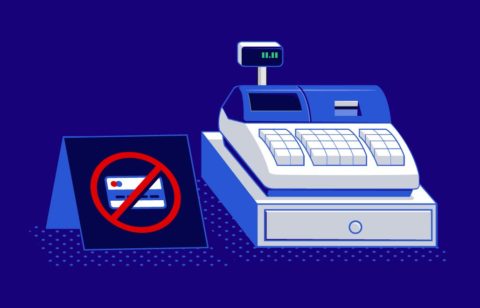College is a time of many new things. Students gain independence and, for many, their first taste of managing money. With all the excitement, there are also new challenges. One challenge is learning to manage money well.
A credit card is a very important financial tool for many students. If used wisely, a credit card can help your child build a credit history. It can also help them learn financial responsibility. Plus, they can earn rewards on purchases.
There are many credit cards for college students. It’s important to choose the right one for your family. Here are some things to think about:
- Low Interest Rate: Find a credit card with a low annual percentage rate (APR). This is especially important if you expect to carry a balance.
- Rewards: Some cards give cash back, travel points, and other rewards for purchases.
- Annual Fees: We suggest credit cards with no annual fees for new college students.
- Low or No Foreign Transaction Fees: If your child will travel or study abroad, their credit card should charge low or no foreign transaction fees.
- Low Credit Limit: When you open your child’s credit card, start with a lower limit. Then, increase it as your child shows they can handle it responsibly.
Top 7 Credit Cards for College Students
1. Capital One SavorOne Student Cash Rewards Credit Card
Pros:
- Great Rewards for Students: You get 3% cash back on dining, entertainment, streaming, and grocery stores. Students often spend a lot in these areas.
- No Annual Fee: It is free to own.
- No Foreign Transaction Fees: This is good for students who travel or study abroad.
- Simple Rewards: You get set rewards on certain things and don’t need to remember to activate them.
Cons:
- No Grocery Rewards at Superstores: You will not get 3% back at Walmart or Target.
- High Interest Possible: APR is between 19.24% and 29.24%.
- May Need Better Credit: It might be a little harder to get approved than other student cards.
2. Discover it® Student Cash Back
Pros:
- Good Cash Back: You get 5% cash back on everyday purchases. This changes each quarter. Examples are Amazon.com, grocery stores, restaurants, or gas stations. This can save you a lot of money.
- Cashback Match™: Discover will match all the cash back you earned in your first year. This doubles your first year’s rewards.
- No Annual Fee: It is free to own.
- No Foreign Transaction Fees: This is great for international travel or studying abroad.
- Easy to Get: Discover is often more flexible with student approvals.
Cons:
- Must Activate Bonus Categories: You must activate the 5% cash back each quarter, which can be easy to forget.
- Limits on Bonus Categories: The 5% cash back has a limit each quarter. This limits how much you can earn at that rate.
- High Interest Possible: APR is between 17.24% and 26.24%.
3. Discover it® Student Chrome
Pros:
- Good Cash Back for Students: You get 2% cash back at gas stations and restaurants. These are common spending areas for students.
- Cashback Match™: Like the Student Cash Back, it matches your first year’s earnings.
- No Annual Fee: It is free to own.
- No Foreign Transaction Fees: This is good for international use.
- Often Easy to Get: It can be easier for students to get approved, like the Student Cash Back.
Cons:
- Limits on Bonus Categories: The 2% cash back is limited to $1,000 each quarter.
- High Interest Possible: The APR is between 17.24% and 26.24%.
- Less Flexible Bonuses: The bonus categories are set. The Student Cash Back has rotating categories.
4. Journey Student Rewards from Capital One
Pros:
- Rewards for Good Payments: You earn 1% cash back on all purchases. This goes up to 1.25% if you pay on time, encouraging good credit habits.
- No Annual Fee: It is free to own.
- No Foreign Transaction Fees: This is great for international travelers.
- Easy Approval: It is often easier for students with limited credit history to get.
Cons:
- Low Base Reward: The 1% base cash back is lower than other student cards.
- High Interest Possible: The APR is 29.99%.
- Fewer Perks: It focuses on building credit and basic rewards but does not have the benefits of other cards.
5. Bank of America® Customized Cash Rewards Credit Card for Students
Pros:
- Choose Your Bonus: You choose a 3% cash back category. Options include gas, online shopping, dining, travel, drug stores, or home improvement.
- Extra Rewards on Groceries: You earn 2% cash back at grocery stores and wholesale clubs.
- No Annual Fee: It is free to own.
- High Rewards Possible: You can earn a lot of cash back if you spend in your chosen category.
Cons:
- Limits on Bonus Categories: The higher rewards are limited to the first $2,500 each quarter. This includes your chosen category, grocery stores and wholesale clubs.
- Foreign Transaction Fees: Bank of America charges a 3% foreign transaction fee. This is a problem if you plan to travel or study abroad.
- Must Choose a Category: You must choose your 3% category to get the most rewards.
- High Interest Possible: APR is between 18.24% and 28.24%.
- May Need More Credit: It might be harder to get approved compared to other student cards.
6. Deserve® EDU Mastercard for Students
Pros:
- No Annual Fee: It is free to own.
- No Foreign Transaction Fees: This is great for international students or those studying abroad.
- Easy Approval for International Students: No U.S. credit history or social security number is required.
Cons:
- Low Rewards: It offers a standard 1% cash back.
- High Interest Possible: APR is 22.49%.
- Fewer Extra Benefits: It focuses on basic features for students.
7. Petal® 1 “No Annual Fee” Visa® Credit Card
Pros:
- For Those with Limited Credit: It uses more than just credit scores to approve applications. This makes it easier for those with thin credit files to get.
- No Annual Fee: It is free to own.
- No Foreign Transaction Fees: This is good for international use.
Cons:
- Limited Rewards: Cash back is only available for certain stores.
- High Interest Possible: APR is between 25.24% and 34.74%.
- Not Just for Students: It is a general credit-building card, not just for students. It has fewer student-specific perks.
Tips to Help Your Student Succeed
- Budget Wisely: Make a budget before your child uses the card. Divide spending into categories like food, fun, books, and needs. This will help you and your child track spending and avoid overspending.
- Pay the Card in Full: Work together to pay off the balance each month. This will avoid interest charges and help you stay within the budget. Carrying a balance can lead to debt that is hard to manage later.
- Understand Your Card’s Details: Read the credit card’s terms and conditions. This includes interest rates, fees, and benefits. This will help you avoid surprises.
- Check Your Statements Together: Look at your credit card statements often. This will help you catch any charges or mistakes that you didn’t make. Report any problems to your card company right away.
- Monitor Their Credit Score: Regularly check their credit score. This helps you track your progress and identify any potential issues early on. You can get a free credit report once a year from each of the major credit bureaus.
Final Thoughts
Picking the right credit card for your college student needs thought. By looking for things like low interest rates, good rewards for students, and no yearly fees, you can find a card that helps them build good credit and earn rewards on what they buy every day.
Remember, using the card the right way is most important. Help your child make a budget, pay off their balance each month, and know how the card works. If they use a credit card wisely, your student can build a strong financial base for their future.







